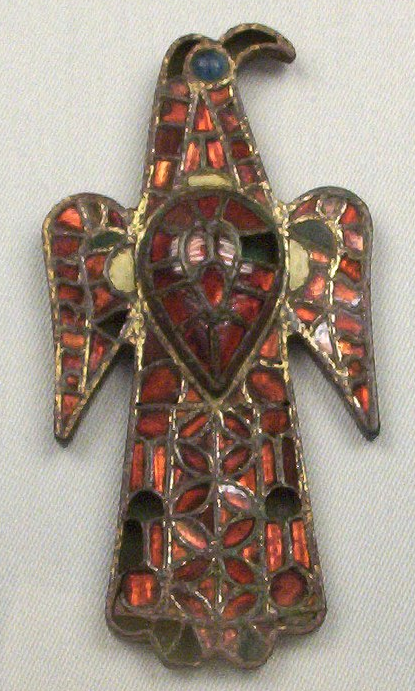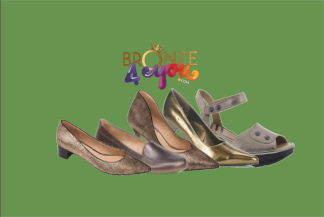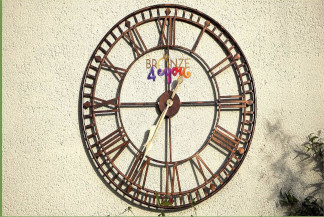
Beauty is found everywhere in nature. In the colors of the birds, which sometimes look iridescent as in the case of hummingbirds or a peacock. In the flowers, you can see an infinite number of colors, some more vivid and others more pastel. Actually, we can see that all nature is decorated, except the human being. Maybe it’s because we have the free will that allows us to decide what we want.
Something that was used to beautify all the history of mankind, since the oldest civilizations were the jewels.
The definition of jewelry is that they are objects of ornament for the body. In general, they are made of precious stones and metals. As for the precious stones they are from precious stones like diamonds to semi-precious stones like jasper and topaz. As for metals, there is gold, which is the most precious metal, as we will also find in history, silver jewelry and bronze jewelry.
Throughout history and in virtually all cultures, jewels, as we understand them today, have had countless meanings, uses, modalities, and styles. Being these, a manifestation of man, designed or created for different purposes, they are another witness that helps us understand how ancient cultures lived or worked.
Among the jewels, we find necklaces, earrings, bracelets, rings, crowns, scepters and many more.
Jewels and their symbolism
In all cultures, jewels, including bronze jewels, had different meanings and symbolisms.
First, we can mention how it was a status and membership symbol. Depending on the materials that were used and the work needed to manufacture them, they have a more or less important value in themselves. In that case, those who had a higher status. That is, who belonged to a higher class were also identified by the jewels they wore.
They also had a functional value such as buckles and brooches for clothes that were initially functional for use and became more decorative.
On the other hand, the jewels had a religious side in some civilizations, such as amulets for protection or the jewels that the priests used both to be recognized as such and in their religious ceremonies.
Bronze Jewelry and Civilizations
Because bronze is not a metal found in nature, but an alloy, it began to be used during the human stage when it developed mining and technology.
In mining, they found and used copper. Over time they discovered that by melting it with 10 percent tin they obtained a malleable material and at the same time more resistant than copper. This is bronze. Bronze was so important to humanity that it is called the second Age of the history of mankind: The Bronze Age.
The civilizations that used bronze the most in their ornaments were the Greeks and the Romans.
Bronze and Greece
Before the arrival of metallurgy in Greece, these territories produced a constant flow of simple decoration elements of stone, clay, and bone. After the arrival of the Bronze Age, the Greeks began to create increasingly complicated designs that eventually produced bronze jewels that reflected the wealth and power of the nobility and rulers. Bronze jewelry in ancient Greece was seen as a symbol of power, social status, protection against evil, celebration of the gods and was most often used by female members of the rich class.
Although gold was always considered the most precious metal, bronze was widely used among other alloys. Bronze rings, bronze necklaces, and carefully crafted bronze pendants were some of the best-known types of jewelry of that period.
This period finally ended with the arrival of the Golden Age of Greece, when its culture flourished and allowed the advancement of jewelry manufacturing technology to the next level.
You may also like…
Bronze and Roman
Jewelry Roman was characterized by an interest in colored gemstones and glass, in contrast to Greek predecessors. Various types of bronze jewelry were worn by different genres and social classes in Rome and were used both for decorative purposes and to convey their social status and wealth. Both Roman men and women frequently used the ornamentation of their houses and bodies to demonstrate wealth, power, influence and knowledge.
Women’s Bronze Jewelry
Jewelry was important for women because it was considered as their own property. That meant it was her personal wealth and could be maintained independently of her husband’s wealth. They had the right to buy, sell, or exchange their own jewelry.
Roman women wore more jewelry than men. Women generally had pierced ears, in which they used a set of bronze rings. Also, they were adorned with bronze necklaces, bronze bracelets, rings, and brooches. Many times they wore a choker necklace, two bracelets, and multiple rings at the same time.
Men’s Bronze Jewelry
Roman men wore less bronze jewelry than their female counterparts. The most common forms of jewelry they used were bronze, gold and platinum rings. Roman men, unlike Greek men, wore multiple rings at once.
Children Bronze Jewelry
And what kind of bronze jewelry did children wear? The jewelry that children wore had a special purpose usually. In the great majority, they were in the form of amulets for protection. These were worn around the neck and had specialized purposes to protect children from disease and misfortune.
As the jewelry collections represented great wealth and power for Roman owners, the use of these jewelry extended to spiritual purposes. They have been found in temples, bronze jewels. That is evidence that the faithful offered some of their bronze jewels to the gods..
Bronze Jewelry in the Middle Ages
After the fall of the Roman Empire, other civilizations continued to develop the elaboration of bronze jewels. The Celts and the Merovingians stood out especially. In terms of quality, they matched and even surpassed the Byzantines. Bronze gemstone fibulas, bronze charms, and to a lesser extent, rings signatory, were the most common pieces of jewelry.
Brass was also used at all times, which is an alloy of copper and zinc. The color is brighter than bronze but many times they are confused with the naked eye. If you want to know more details about the differences between bronze and brass, read “7 differences between bronze and brass”.
A characteristic of bronze and that is no exception in bronze jewelry is the patina.
Why does patina arise in Bronze Jewelry?
The Jewels of Bronze develop a green patina over time as the bronze is exposed to moisture and oxygen. The tarnish, or patina, is caused by a chemical reaction between the various metals of the alloy with air, water, salt powder, and its components. In the case of bronze jewels that are in contact with the skin, it can react in this way due to the acids in the skin, or creams or perfume we use. That patina blurs and leaves the jewel unattractive.
How to clean your Bronze Jewelry ?
If you decide to have bronze jewelry, you will have to be careful to keep them dry and clean them regularly. It´s because the bronze is prone to oxidation.
If your bronze jewel already has patina then the first thing is to dust with very soft flannel. Then use some commercial metal cleaning product. With the help of a brush to clean all the deepest details of the jewel. If you want to find more homely methods, I recommend you read the article: “ 7 tips to clean your bronze”.
How to take care of your bronze jewelry
If you want to avoid the patina in your jewel, keep your bronze item in an area with low humidity and protected from dust. Avoid manipulating the item with bare hands brcause the hands have moisture and most of us use hand creams. If the item is stored, a good option is a plastic bag; The more airtight, the better.
Why do you dye your skin green?
Remember that bronze is an alloy of copper and tin. In that case, copper will make your skin green, whether you have an allergy or not. Bronze copper reacts with sweat and skin acids, produces copper chloride. Copper chloride is a green substance. That is passed to the skin of your fingers in the case of using a bronze ring.
Mainly in a warm climate or if you are prone to sweat, your bronze jewelry will definitely make your skin turn green.
An easy solution is to cover only the inside of the piece with transparent nail polish. The inner part is the one that is most in contact with the skin. This creates a barrier, preventing oxidation. Note that you should reapply the coating from time to time, as it wears out.
Another is to remove all jewelry before bed, clean them and store them in a dry place. Avoid putting perfumes and creams with the bronze jewels on. Remove your rings before bathing or swimming, especially in saltwater.
Do Bronze Jewelry cause allergies?
The major cause of allergies in jewelry is none other than the Nickel. Many bronze mixtures have nickel in them. Nickel allergies affect six out of every 100 people, according to reports from the Department of Dermatology at the University of New York. A nickel allergy may cause ordered bars, itching, blisters, discoloration, and rashes. These effects can last up to a month after the user removes the offensive jewelry. It is important to note that pierced earrings can trigger nickel allergies in people who previously did not suffer from metal allergies.
If you only have a mild nickel allergy, you can cover your bronze jewelry with clear nail polish. This may work for a few days but inevitably the thin layer of enamel will end up wearing out and the discomfort will return.
If you are allergic you will notice the reaction in the first 12 to 48 hours after being in contact with the metal. If a piece caused you an allergy you should remove it immediately. Clean the area with some iodine and sterile gauze and let the area heal before placing any other replacement.
So if they sold you a bronze jewel and caused you an allergy, it most likely has nickel and is not a pure bronze alloy.



